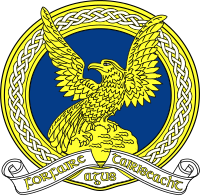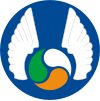Irish Air Corps
| Air Corps | |
|---|---|
| An tAerchór | |

Badge of the Air Corps
|
|
| Founded | 1924 |
| Country |
|
| Role | Air support |
| Size | 733 personnel 24 aircraft (+ 3 aircraft in support of An Garda Síochána) |
| Part of | Defence Forces |
| Main airbase | Casement Aerodrome, Baldonnel |
| Motto(s) | Forḟaire agus Tairiseaċt ("Watchful and Loyal") |
| Commanders | |
| GOC Air Corps | Brigadier General Paul Fry |
| Insignia | |
| Roundel |  |
| Patch |  |
| Ensign |  |
| Aircraft flown | |
| Attack | PC-9M |
| Patrol |
CASA CN235-100MP Persuader Cessna FR172H |
| Trainer | PC-9M |
| Transport |
CN-235 Learjet 45 AW139 EC 135P2 |
The Air Corps (Irish: An tAerchór) is the air component of the Defence Forces of Ireland. Through a fleet of fixed and rotary wing aircraft, it provides military support to the Army and Naval Service, together with non-military air services such as Garda air support, air ambulance, fisheries protection and the Ministerial Air Transport Service. The primary airbase is Casement Aerodrome located at Baldonnel, County Dublin.
The National Army Air Service was independent Ireland's first air force. During the Anglo-Irish Treaty talks of 1921, a Martinsyde Type A Mark II biplane was purchased and put on 24-hour standby at Croydon Airport to allow Michael Collins to escape back to Ireland if the talks failed. The plane was not needed for this mission, and it became the first aircraft of the new National Army Air Service arriving in June 1922. The National Army Air Service was established in July 1922 and was gradually equipped with various aircraft types acquired from the R.A.F. and the Aircraft Disposal Company. This company had been formed in 1919 to dispose of surplus aircraft and aero-engines from World War I for the British Government. By the end of 1922, the National Army Air Service comprised ten aircraft, consisting of six Bristol F2B fighters from the First World War and four Martinsyde F4 Fighters, and about 400 men. Its successor, the Irish Army Air Corps was established in 1924 following a re-organisation of the National Army at the end of the Civil War.
...
Wikipedia
